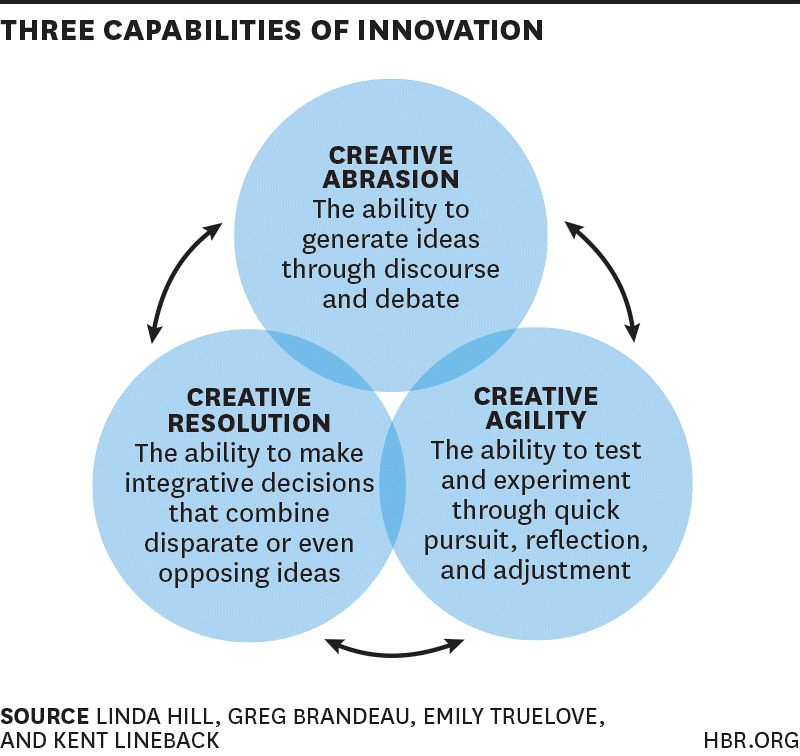We are often called in by clients to provide Conflict Resolution training. Since many of our clients are leading large change or transformation efforts it is both predictable and inevitable that conflict will occur AND it will be mostly internal. When many of us think about conflict a very negative picture comes to mind, one that focuses on polarizing positions and negative consequences which is where conflict resolution training comes in. But, what if we looked at “disagreement” that is associated with conflict, as having positive consequences? How might that change the way we deal with conflict? Instead of resolving conflict perhaps we need to think about encouraging, fostering and managing conflict to achieve those positive consequences.
Last week, Harvard Business Review ran an article entitled “The Capabilities Your Organization needs to Sustain Innovation”. The article highlights a company like Pixar Animation Studios that has been consistently successful and on top of their game for over two decades. The authors attribute Pixar’s success to their collaborative approach which at its core is all about generating and channeling conflict in order to foster innovation. Pixar’s cofounder and president noted: “We’re not just making up how to do computer generated movies; we’re making up how to run a company of diverse people who can make something together that no one could make alone.” The authors also use Thomas Edison has an example of an innovator. While Edison was clearly an “inventor” he was also a “leader of invention” in that he used many, many people to make his inventions a reality.
The myth this article dispels is that innovation is probably NOT “purely a solitary act or flash of insight in the mind of one individual” but rather “ . . . the interactions of people with diverse expertise, experience or points of view. Flashes of insight may play a role but most often they simply build on and contribute to the collaborative work of others.”
The article points to three capabilities of innovation:
What I love about this model is that is takes the mystique out of innovation. If you read the words that are expressed in the model above, it is all about using conflict as a means to innovate. Creative Abrasion is all about creating conflict to generate new ideas. Creative Agility takes the ideas generated in the Creative Abrasion and tries them out through quick execution and adjustment along the way. You can think of this as using the AGILE methodology to create new solutions. This can be a very powerful way of moving innovation forward, although not necessarily universally accepted – see this article recently published in Forbes “More On Why Managers Hate Agile”. A critical element of AGILE is being comfortable that you don’t need all the answers up front and trying new ideas that may fail is OK. This requires an environment that supports experimentation and uses failure as a learning opportunity. Lastly, Creative Resolution is where multiple options are blended together to equal more than the sum of the parts. This requires keeping multiple options on the table even when they may seem mutually exclusive or incompatible. Collaboration is critical here and requires being open to trying new things and thinking outside the box.
These capabilities sound easy BUT what is the secret sauce? I would suggest that it is leadership. Having the staying power to keep trying new things over and over again (knowing that you will fail at times) is tough. It requires a strong leader to create the conditions to seek out conflict and use it creatively. Have no doubt it is hard work, which is why many companies choose not to innovate.
What can we all take away from this? The message here is that conflict, especially generated within your cross-functional team, can be a good thing. Whether you realize it or not disagreement can unleash new ideas. So if you think that conflict needs to be “resolved”, you need to start thinking about “managing” it to drive innovation.
Let us know what you think and join in the conversation . . . . .



1 Comment
Pingback: Will a Robot Deliver Your Kale to Your Front Door? Sure – If You Let Echo (From Amazon) Do It - News You Can Use